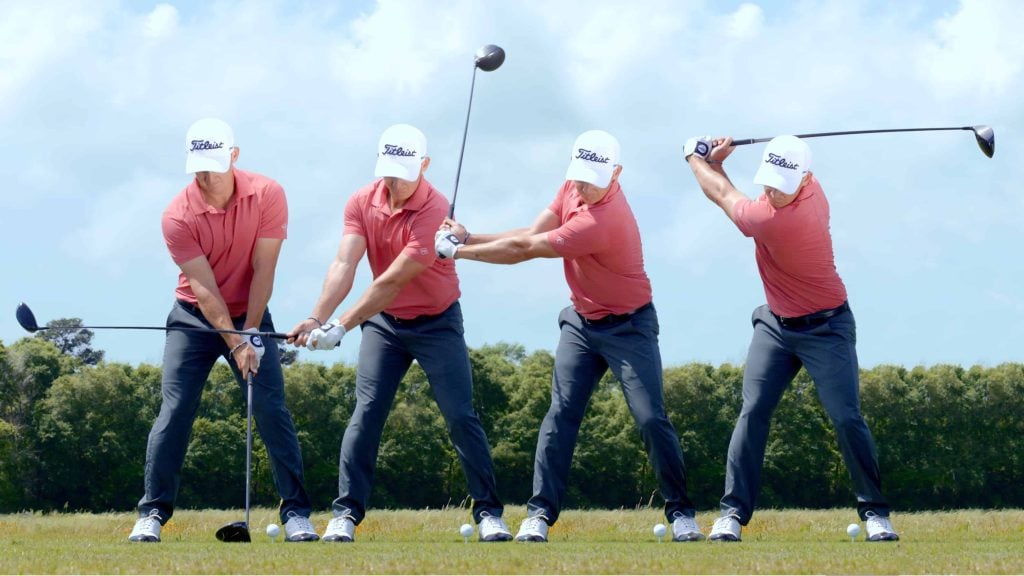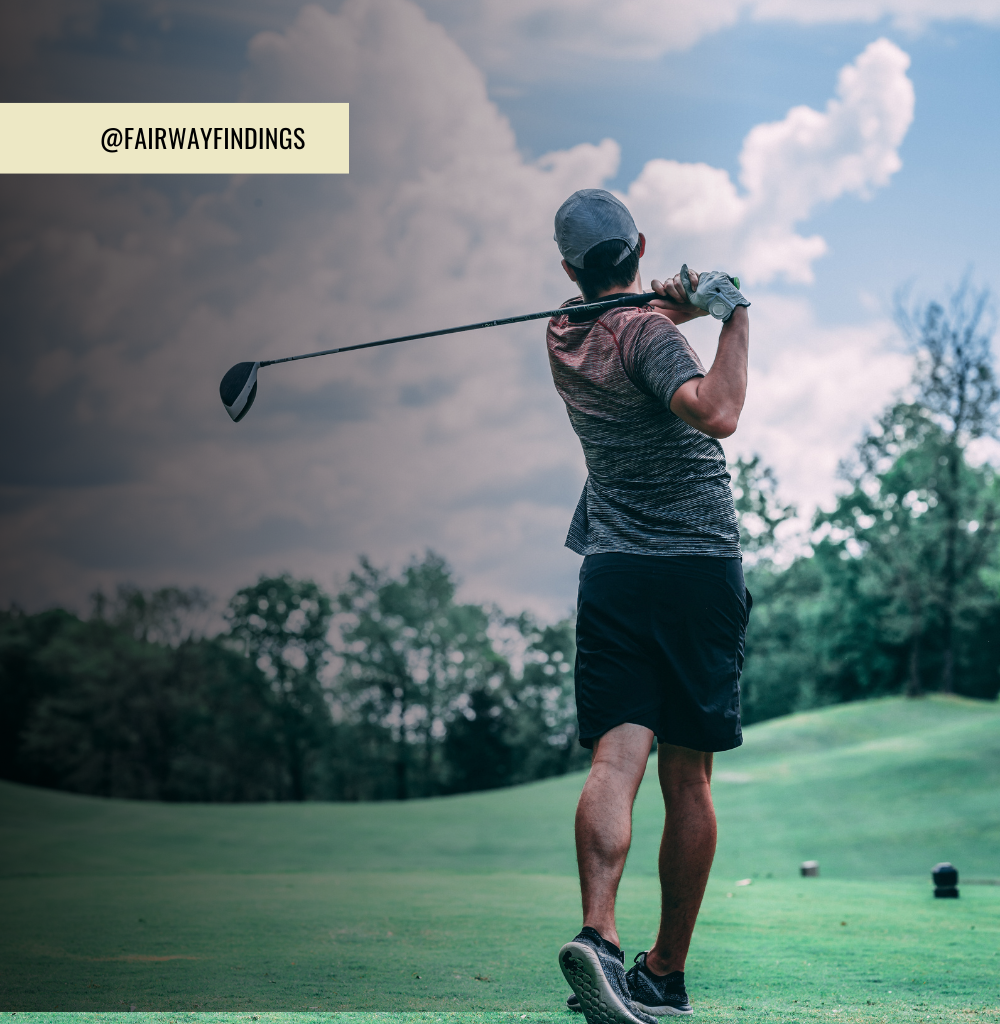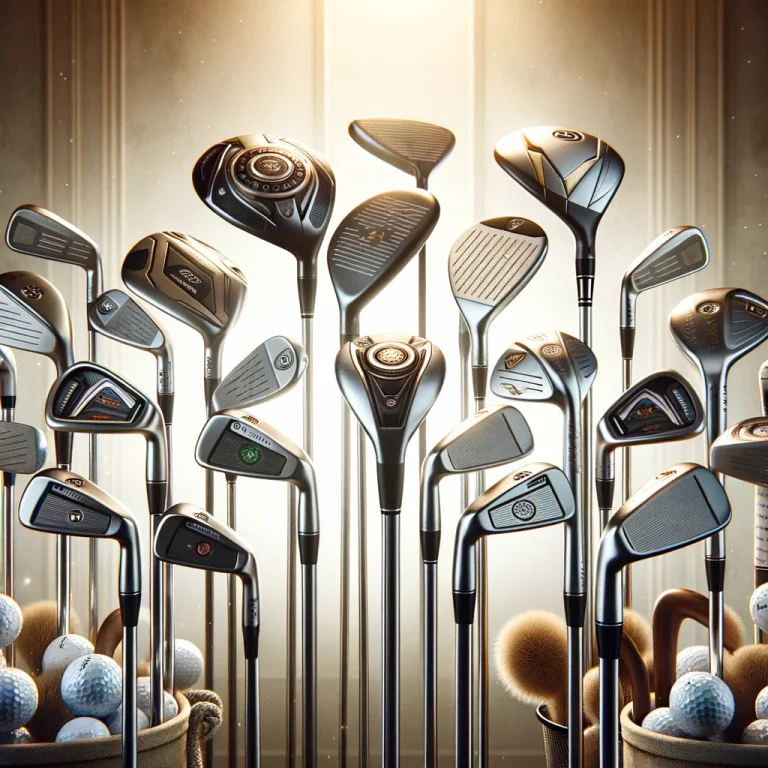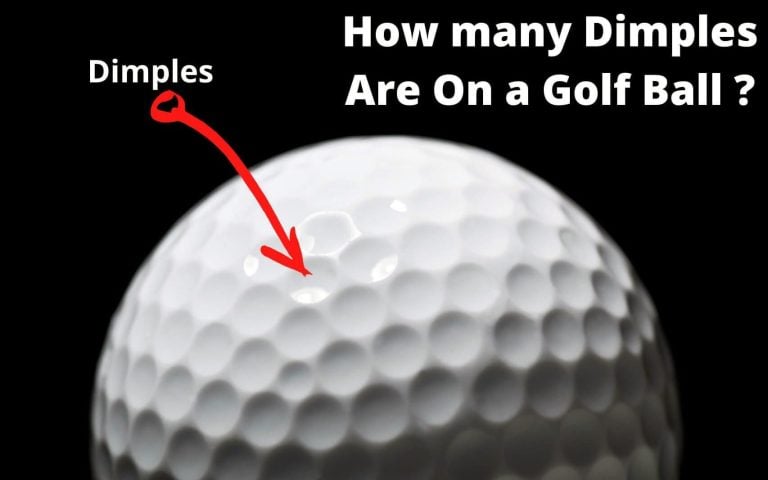How to hit a golf ball straight
Key Takeaways:
- Grip and club face alignment are crucial for hitting a golf ball straight. Understanding the role of grip and mastering proper hand placement and grip technique can greatly impact accuracy.
- Proper body alignment and stance are essential for hitting the ball straight. Aligning the feet parallel to the target line and choosing the right stance based on club face alignment can improve accuracy.
- Swing technique and backswing play a vital role in hitting the ball straight. Keeping the club head inside the ball during the backswing, maintaining a smooth and balanced swing, and paying attention to proper wrist hinge and alignment can enhance shot accuracy.
Introduction
Gripping the club correctly and aligning the club face are vital factors when it comes to hitting a golf ball straight. In this section, we will explore the importance of these aspects in achieving accuracy and consistency in your shots.
By understanding the significance of grip and club face alignment, you can improve your overall performance on the golf course and maximize your chances of hitting the ball straight towards the intended target.

The Importance of Grip and Club Face Alignment
For accuracy in hitting the golf ball, a secure grip and correct club face alignment are vital. A solid grip allows for control of the club, giving a stable position during the swing. This allows for a consistent connection with the ball, reducing mishits or slices. Meanwhile, aligning the club to the target is necessary – it sets the path and direction of the ball and ensures the club face is square at impact for straight shots.

Correct hand placement and grip technique are important for a straight ball flight. Golfers can gain control and consistency with a correct grip. Pressure should be firm, but not too tight – this prevents movement of the club during impact and creates a predictable ball flight.
Visualizing an imaginary line from the ball to the target and aligning the club face parallel to this line is essential for accurate shots. This sets up the shot to start on the path towards the target.
To improve grip and club face alignment, alignment aids like sticks or markers can help create muscle memory. Also, keeping consistent grip pressure throughout each swing will ensure control and a relaxed yet firm grip. Lastly, professional advice from a golf instructor can provide guidance on individual grip and areas for improvement to better ball striking and accuracy.
Understanding the role of grip in hitting the ball straight
Golfers need to understand the importance of grip for hitting the ball straight. A proper grip plays a major role in achieving straight shots. Holding the club correctly impacts accuracy and consistency. Staying in control during the swing is essential.
The grip helps with stability, balance, and lessens the chances of mishits. Pressure should be applied correctly to allow for maximum energy transfer to the ball. Additionally, aligning the hands helps square the club face at impact, resulting in straighter shots.
The grip also aids in controlling shot shaping and trajectory. Golfers can adjust their grip to fade or draw shots. Furthermore, it affects wrist action during the swing, contributing to power and clubhead speed.
Sadly, many amateur golfers make the mistake of an incorrect grip, according to Golf Digest. This leads to inconsistent shots and a loss of distance. To hit the ball straight and achieve consistent results, golfers must understand and practice a proper grip.
Proper hand placement and grip technique
For a straight shot, golfers need proper hand placement and grip technique. Understanding the role of grip can help improve accuracy and consistency. Aligning the club face with the target is also key.
Follow three steps to achieve this:
- Place hands directly on top of the club handle. This gives maximum control and stability.
- Grip firmly but relax. No excessive tension in hands and wrists.
- Hands slightly ahead of the club head at address. This creates forward shaft lean and a clean strike.
Apart from hand placement, other factors contribute to hitting the ball straight. These include body alignment, stance, and a smooth, balanced swing. To enhance overall performance, address all aspects of technique.
Aligning the club face with the target? Like finding true love – it takes patience, precision, and practice.
Aligning the club face with the target for accuracy
Aligning the club face with the target is key for nailing a golf ball. It allows the ball to fly straight towards the target, increasing accuracy.

Here’s a 5-step guide to aligning the club face:
- Grip: Place your hands in a neutral position and hold firmly but relax. This helps control the club face during the swing.
- Body Alignment: Stand behind the ball and imagine a line from the target to the ball. Align your body parallel to this line (feet, hips, and shoulders).
- Club Face Alignment: Take your stance and turn the club face towards the target. Make sure a line perpendicular to both feet intersects the center of the club face.
- Visual Alignment: Check that everything is aligned correctly. Use visual markers on or near the target to aim at the right spot.
- Practice Swings: Swing while maintaining the alignment of your body and club face. Feel how it should look and feel when executing a shot accurately.
By following these steps, you can align the club face with the target and hit straight shots. But, other factors like swing technique and equipment also play a role in accuracy. So, it’s best to seek professional help and practice regularly to identify and fix any errors. Proper body alignment – the secret to nailing straight shots and avoiding ricochets.
Body Alignment and Stance
Proper body alignment and stance are crucial for hitting a golf ball straight. In this section, we will uncover the significance of correct body alignment, how to choose the right stance based on club face alignment, and the importance of aligning the feet parallel to the target line for accuracy. Mastering these elements will greatly enhance your ability to achieve a straight shot on the golf course.

The importance of proper body alignment for hitting the ball straight
Proper body alignment is essential for connecting with the golf ball. It ensures all swing parts work together, for accurate and consistent shots.
- Achieving good body alignment aids balance in the swing, which is needed to make clean contact with the ball and stop unwanted spin.
- Having the body in the right alignment helps transfer power from the body to the club, so maximum power can be achieved without sacrificing accuracy.
- Plus, proper body alignment helps set an effective target line. When aligning the feet parallel to this target line, golfers can improve aiming and increase their chances of hitting the ball straight to the target.
It is important to remember that body alignment isn’t just about where the golfer stands or how they position themselves. It’s both physical and mental. Golfers need to align their body in a way that promotes balance, stability and power. Muscles need to remember, so regular practice is necessary to achieve and keep proper body alignment.
Choosing the right stance based on club face alignment
Choosing the correct stance based on club face alignment is vital in golf. Aligning the club face correctly is key to accuracy and distance. Matching your body with the club face ensures a solid contact with the ball.
Stand parallel to the target line. Make sure your feet, hips and shoulders are all in line with the target. This will give a consistent and direct hit.
Position your feet shoulder-width apart, slightly bend the knees. This gives a strong foundation for power and keeping balance during the swing.
Put the club head behind the ball. Align it perpendicular to the target line. The leading edge of the club face should be square and pointing at the target.
Adjust your grip to the club face’s alignment. Grip firmly but not tightly, allowing proper control and mechanics.
Keep a neutral spine position. Avoid leaning or bending too much forward or backward. A straight spine aids rotation and extension through impact.
Visualize the shot before swinging. Imagine the target line and impact point on the ball. This helps in getting aligned for a successful shot.
A fact: Golf Digest Magazine’s study on amateur golfers’ swing errors shows 90% of missed shots are due to bad alignment or incorrect stance set up.
Aligning the feet parallel to the target line for accuracy
Aligning your feet parallel to the target line is essential for accurate golf shots. This positioning helps your body stay in the correct position and allows a smooth weight transfer during the swing, resulting in better accuracy.
Here is a 6-step guide for aligning your feet correctly:
- Stand behind the ball and identify your target.
- Pick a reference point, such as an object or spot on the ground, on the target line.
- Set your club pointing directly at the reference point.
- Place your feet shoulder-width apart with the toes pointing towards the reference point.
- Make sure your heels are perpendicular to the target line, keeping feet parallel.
- Double-check your foot alignment before swinging.
These steps let you align your feet properly, so you can control direction and shot accuracy. However, other factors also influence the outcome of your shot, like grip, club face alignment, body alignment, stance, swing technique, backswing, club selection, and equipment.
To improve accuracy, ensure correct hand placement and grip technique throughout the swing. Keep the club head inside the ball during the backswing to avoid side spin. Also, maintain a smooth, balanced swing for better accuracy.
Practice these techniques and get professional help if needed. This will help you identify and fix any swing errors, leading to better shot accuracy.
Swing Technique and Backswing
Develop a consistent swing technique and backswing to improve your golf shot accuracy. Discover how keeping the club head inside the ball, maintaining a smooth and balanced swing, and achieving proper wrist hinge and alignment during the backswing can help you avoid side spin and enhance your ability to hit the ball straight. Enhance your golf game with these essential techniques.
Keeping the club head inside the ball during the backswing to avoid side spin
It’s essential to keep the club head inside the ball during the backswing to dodge side spin and enhance accuracy in golf shots. Keeping the club head on the inside of the target line in the backswing stops unwanted spin, leading to straighter ball flight. Below is a 4-step guide to help golfers do that:
- Proper grip: Put your hands in a neutral position and hold the club handle lightly but firmly.
- Body rotation: Concentrate on rotating your torso and hips as you start your backswing. This helps keep the club head in line with the target, avoiding it from going too inside or outside of the wanted path.
- Club positioning: Notice where the club shaft is pointing at various positions throughout the backswing. It should be parallel or slightly inside the target line. This guarantees your swing path stays true and removes any excess movement which can bring about side spin.
- Wrist hinge: Keep proper wrist hinge as you swing back. Avoid over-hinging or cupping your wrists too early, as this may cause side spin.
In addition to these steps, practice and consistency are essential for building a consistent swing that keeps the club head inside during the backswing. Getting expert advice can also assist in finding any specific problems with technique or alignment that may be causing side spin.
By abiding by these guidelines and continually improving your technique, you can better your ability to hit golf shots straighter by keeping the club head inside the ball during the backswing.
Maintaining a smooth and balanced swing for better shot accuracy
Achieving better shot accuracy in golf requires a smooth and balanced swing. The way you swing the club can drastically change the ball’s trajectory. Having control over the club throughout the whole motion is key for accurate shots.
- Grip: Hold the club securely, but not too tightly. Your hands should stay in the same position on the grip for greater control.
- Stance: Line up both feet with the target line. This helps your body stay aligned from head to toe, which ensures a smoother swing.
- Backswing: Keep the club head inside the ball to avoid side spins. This will help maintain control of the ball’s direction. A controlled backswing leads to a more accurate downswing.
- Balance: Keep balance throughout the entire swing. Avoid any sudden or jerky movements. This will help with weight transfer and control the clubhead better.
- Practice: Consistent practice is necessary to improve swing mechanics and shot accuracy. Seek professional advice to point out any issues.
Maintaining a smooth and balanced swing is essential for better shot accuracy. Every golfer is different, though. Factors such as flexibility, strength, and body mechanics affect an individual’s swing.
Knowing your specific needs and making adjustments can improve your performance on the course. Golfers have known the importance of a well-executed swing for centuries. Professional golfers have dedicated much time and effort to perfecting their swing technique.
Proper wrist hinge and alignment during the backswing
Golf’s backswing needs a right wrist hinge and alignment to be successful. Wrist positioning and hinging affect accuracy and power. It’s key for consistent shots on the fairway. Here is how to master it:
- Hands on the grip with a neutral wrist position. Not bent backward or forward.
- Hinge wrists when club reaches waist-high or just before.
- Lead wrist should form a slight “V” with the forearm.
- Stay aware of alignment throughout. Avoid unnecessary movements.
- Drills help train muscle memory.
Personal technique varies, but a neutral wrist and consistent hinge is basic. Focus on wrist hinge and alignment to improve mechanics and hit straight.
Club Selection and Equipment
When it comes to hitting a golf ball straight, your club selection and equipment play a crucial role. In this section, we’ll uncover the secrets behind choosing the right clubs that fit your height, swing speed, and power.
We’ll also explore how utilizing adjustable clubs can offer a customized approach to enhance your accuracy on the course. So, let’s dive into the world of club selection and equipment for a straighter shot.
The role of equipment in hitting the ball straight
Clubs are key to accuracy and hitting the ball straight. Get ones that fit your height, speed, and power for optimal control and consistency. Adjustable clubs offer customizing options to dial in the clubface alignment. The right equipment boosts your ability and ensures a comfy and efficient swing.
Golf balls, shafts, grips, and aids also contribute. Balls designed for straighter flight reduce sidespin and decrease shot spread. Shaft flexes that fit your swing promote smoother motion for more accuracy. Grips help maintain hand positioning which affects clubface angle. Alignment sticks or lasers provide visual guidance for body alignment.
Seek professional advice when selecting clubs or making adjustments. They can analyze your swing, spot errors in your setup, and give recommendations. Getting professional input will help you improve even more.
Having the right equipment is crucial for consistent straight shots. From club selection to alignment aids, each aspect is important for accuracy and performance on the course. Make sure you have an arsenal that optimizes comfort and precision in every shot.
Choosing clubs that fit your height, swing speed, and power
Choosing the right golf clubs for your height, swing speed, and power is essential for optimal performance on the course. These factors influence accuracy and distance of your shots. Consider:
- Club Length: Shaft length should match your height and arm length. Longer clubs may give more distance, but can reduce control and accuracy.
- Club Flexibility: Match your swing speed to the shaft’s flexibility. Stiffer shafts are ideal for faster swings, whilst flexible shafts provide more control with slower swings.
- Club Head Design: Different golf club heads cater to different levels of ability and preference. Beginners may prefer forgiving heads, while advanced players may prefer less-forgiving but more workable clubs.
- Club Weight: Club weight affects swing speed and power. Lighter clubs can increase swing speed, while heavier clubs generate more power but reduce swing speed.
- Grip Size: Select a grip size that matches the size of your hands. This maintains proper hand placement and control during each swing.
- Custom Fitting: Professional custom fitting services provide personalized recommendations based on your physical attributes and swing characteristics. This ensures you have clubs that suit your individual needs.
Considering these factors when picking clubs can improve your performance on the course, helping you get maximum accuracy and distance in your shots. Assess club length, flexibility, weight, head design, grip size, and if possible seek custom fitting. This way, you have clubs that fit your height, swing speed, and power.
For the best results, speak to a professional golf club fitter or instructor. They can assess your needs and guide you towards most suitable clubs that will optimize your performance on the course. With their help, you can make confident choices that will improve your golfing experience.
Utilizing adjustable clubs for customization
Golfers are able to customize their clubs for greater control and to optimize them for their needs. This enhances comfort, confidence, and performance on the course.
They can modify the loft angle of their clubs, which affects trajectory and distance. This helps them adapt to different conditions and their own swing.
The lie angle can be adjusted, so the clubhead rests correctly on the ground when addressing the ball.
Interchangeable weights can be used to customize the center of gravity. This changes shot shape and ball flight control.
Players can adapt to different weather or course demands by adjusting their clubs.
Individuals can customize clubs based on height, strength, or preferred shot shape.
Using adjustable clubs provides flexibility and control, allowing for better performance and satisfaction on the golf course. Consistency is key for straight shots, just like remembering where you parked your car!
Practice and Consistency
Consistent practice is key to hitting the golf ball straight. In this section, we will explore the importance of practicing regularly and how it can enhance your accuracy. Additionally, we’ll provide valuable tips to improve your swing mechanics and increase your overall precision.
For those seeking to fine-tune their techniques, we’ll discuss the benefits of seeking professional advice to identify and correct any swing errors. Mastering these aspects will bring you closer to achieving a more precise and powerful golf swing.
The importance of consistent practice in hitting the ball straight
Practicing regularly is key to hitting the golf ball straight. With routine honing of your skills and technique, you can develop a consistent swing that allows precision and control. Working on your grip, body alignment, and swing technique helps muscle memory and boost confidence.
During practice, focus on hand placement and grip technique for a firm hold on the club. Accurately align the club face with the target. This helps refine the grip and alignment, decreasing errors and increasing accuracy.
Align yourself with the target line for successful accuracy. Choose the right stance based on club face alignment. Pay attention to your body position and make adjustments as needed.
Develop a smooth and balanced swing for shot accuracy. Keep the club head inside the ball during the backswing to avoid side spin. Wrist hinge and alignment enhance overall swing technique for consistent contact with the golf ball.
Equipment matters, but consistent practice is important. Utilize adjustable clubs for customization based on height, swing speed, and power. Become familiar with their capabilities and use them for accurate shots.
A golf instructor can identify and fix swing errors. Receive guidance and feedback and make changes for better performance on the course.
Tips for improving swing mechanics and accuracy
Golfers need consistent and precise shots, and for that, improving swing mechanics and accuracy is crucial. Grip and club face alignment, along with proper body alignment and stance, are key factors. Selecting the right clubs based on personal characteristics (height, swing speed, and power) can help too.
Practicing and professional advice is needed for continual improvement. These tips can enhance swing mechanics and accuracy:
- Ensure proper hand placement and grip.
- Align the club face with the target.
- Develop a smooth and balanced swing.
Individual characteristics should be considered when selecting clubs. Professional advice can provide insights and help correct errors. Dedication and adherence to these guidelines will optimize performance and hit the ball straight with precision.
Seeking professional advice to identify and correct swing errors
Golfers looking to improve their swings should consider professional advice. These pros have the knowledge to spot flaws in a swing and pinpoint areas needing improvement. Get tailored guidance to correct issues and gain insights on how to hit straighter shots.
- Find the right pro: Locate an experienced golf instructor or coach that can meet your needs.
- Analysis: A swing analysis is usually done which involves recording swings, grip, alignment, body position and swing path.
- Improvement Areas: Flaws in the swing are identified and explained.
- Personalized Instruction: A pro will provide personalized instruction to help you fix any issues.
- Practice & Follow-up: Dedicate time to practice the recommended techniques and regularly schedule follow-up sessions to track progress.
Bear in mind that everyone’s journey to hitting straight shots is different. Don’t expect overnight results. Patience, effort and regular practice are required to see long-term success.
Conclusion
To hit a golf ball straight, precision and technique are key. The following guidelines can help golfers improve their chances of a straight shot:
- Aligning the feet, hips, and shoulders parallel to the target line is important for a square clubface and minimal spin.
- Balancing the stance throughout the swing helps promote a straighter ball flight.
- Using a neutral grip with proper wrist hinge and control is essential.
- Swing mechanics are also key; smooth and controlled, focusing on tempo and rhythm, with a full shoulder turn and weight transfer.
By following these guidelines, golfers can hit more successful shots. Practice and attention to detail are key for improving overall performance.
Some Facts About How To Hit a Golf Ball Straight:
- ✅ Hitting a golf ball straight requires the club face to impact the ball square every time. (Source: Team Research)
- ✅ The grip, specifically the lead hand, plays a crucial role in hitting the ball straight. (Source: Team Research)
- ✅ Proper alignment of the club head and ball with the target is important for hitting the ball straight. (Source: Team Research)
- ✅ The feet can be set in an open, closed, or neutral stance as long as the club face is properly aligned. (Source: Team Research)
- ✅ Hitting through the ball with a square clubface should result in a straight shot. (Source: Team Research)
FAQs about How To Hit A Golf Ball Straight
How does a closed stance affect hitting a golf ball straight?
A closed stance can affect hitting a golf ball straight by promoting an outside-in swing path, which can result in a slice or fade. It is recommended to have a neutral stance for hitting the ball straight.
What is a neutral swing path and how does it help in hitting a golf ball straight?
A neutral swing path refers to a swing where the club follows a straight path towards the target. It helps in hitting a golf ball straight by minimizing side spin and promoting a more accurate shot.
Why is it important to have a tilted spine when hitting a golf ball straight?
A tilted spine position, usually tilted forward at about 30 degrees, helps create the proper angle for a consistent golf swing. This setup allows the golfer to make solid contact with the ball and helps in generating power and hitting the ball straight.
What is the art of a straight ball flight in golf?
The art of a straight ball flight in golf refers to the ability to consistently hit the ball in the intended direction without excessive curve or spin. Hitting the ball straight requires proper technique, including a square clubface at impact and an accurate swing path.
How does body weight transfer contribute to hitting the ball straighter in golf?
Proper body weight transfer from the trail foot to the lead foot during the golf swing helps generate power and promotes a consistent, straight ball flight. It allows for a more fluid and efficient swing motion, leading to better contact and accuracy.
What role does the lead hand play in hitting the golf ball straight?
The lead hand, typically the non-dominant hand for right-handed golfers (left hand), plays a crucial role in generating control and power in the golf swing. It should have a neutral grip, similar to shaking hands, to ensure proper clubface alignment and increase the chances of hitting the ball straight.






